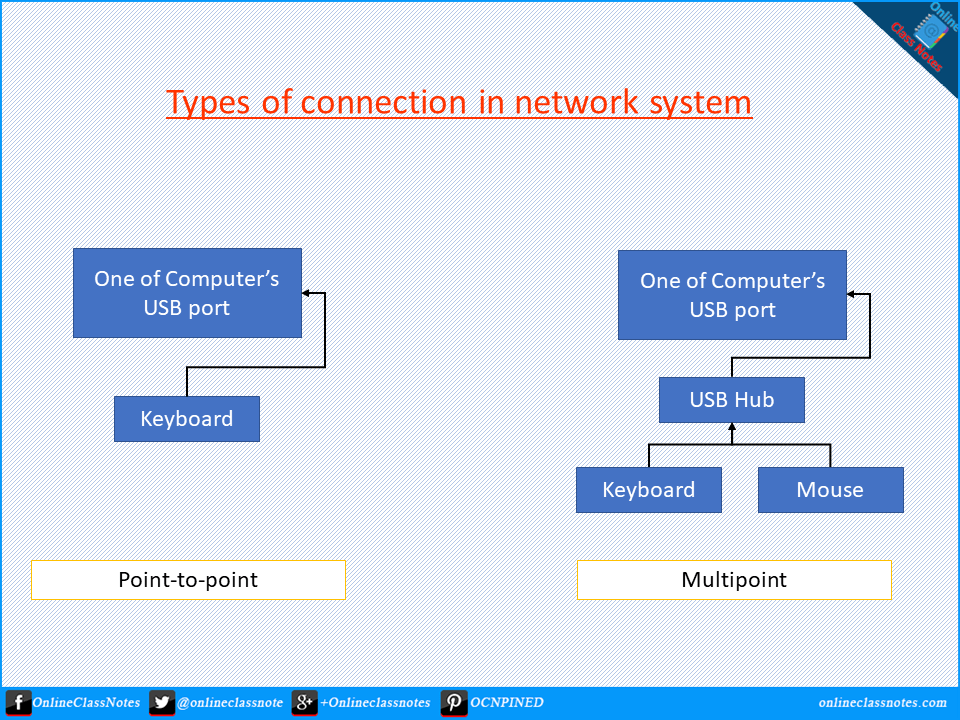A network system enables data communication between 2 or more devices. Communication links or channels connects these devices. There can 2 types of connection possible; point-to-point and multipoint connection. Both of these connections has their advantages and disadvantages and use cases.
Point-to-point Connection:
In point-to-point connection, a dedicated communication channel or link connects 2 devices. No other device uses this communication channel. Thus the 2 connected devices can use the full capacity of the link. In this type of connection, in general, the communication channel or medium is a cable or wire. Data transferred from one device to another device then travels through this dedicated channel using the full capacity of the medium. Beside wire or cable, use of satellite or microwave link is also possible.
Example of point-to-point connection can be a keyboard connected to a computer’s USB port with a cable. This is an wired point-to-point connection. Again when a keyboard is wireless and uses an USB receiver which is connected to an USB port of the computer, it is still a point-to-point connection but wireless. However, if the keyboard connects to the USB port of an USB hub which connects to the computer, then this is not a point-to-point connection, as then the USB hub is connects to the computer as point-to-point and the keyboard connects to the USB hub as point-to-point but the keyboard does not connect to the computer as point-to-point.
Advantages of Point-to-point Connection:
- Dedicated communication channel
- Faster communication
Disadvantages of Point-to-point Connection:
- Too many cables if cable medium is used
- More ports required
Multipoint Communication:
Opposite to point-to-point communication, multipoint communication lets more than 2 devices share a link or communication channel. That is, more than 2 devices can communicate to each other using a single communication channel or link.
Consider the above given example of USB hub. Lets say, that an USB hub connects to a computer with point-to-point connection. Again, a mouse and a keyboard connect to the USB hub with point-to-point connection. But when the keyboard and mouse send input to computer, they both send it through the single link between the USB hub and the computer. Thus, the keyboard and the mouse shares the single communication channel between the USB hub and computer.
A more modern example can be an wireless keyboard mouse combo pack. Here, both the keyboard and mouse communicates with the computer with one single USB receiver. This receiver can receive inputs from both the keyboard and mouse.
In multipoint connection, if the connected devices can use the link at the same time simultaneously, then this is an spatially shared connection. On the other hand, if they use the connection one after another, then it is a time-shared connection.
Advantages of Multipoint Connection:
- Less cabling
- One port connects to multiple devices
Disadvantages of Multipoint Connection:
- As network devices shares link’s capacity, communication can be weak
You can optionally checkout this wikipedia page for more info https://en.wikipedia.org/wiki/Computer_network
